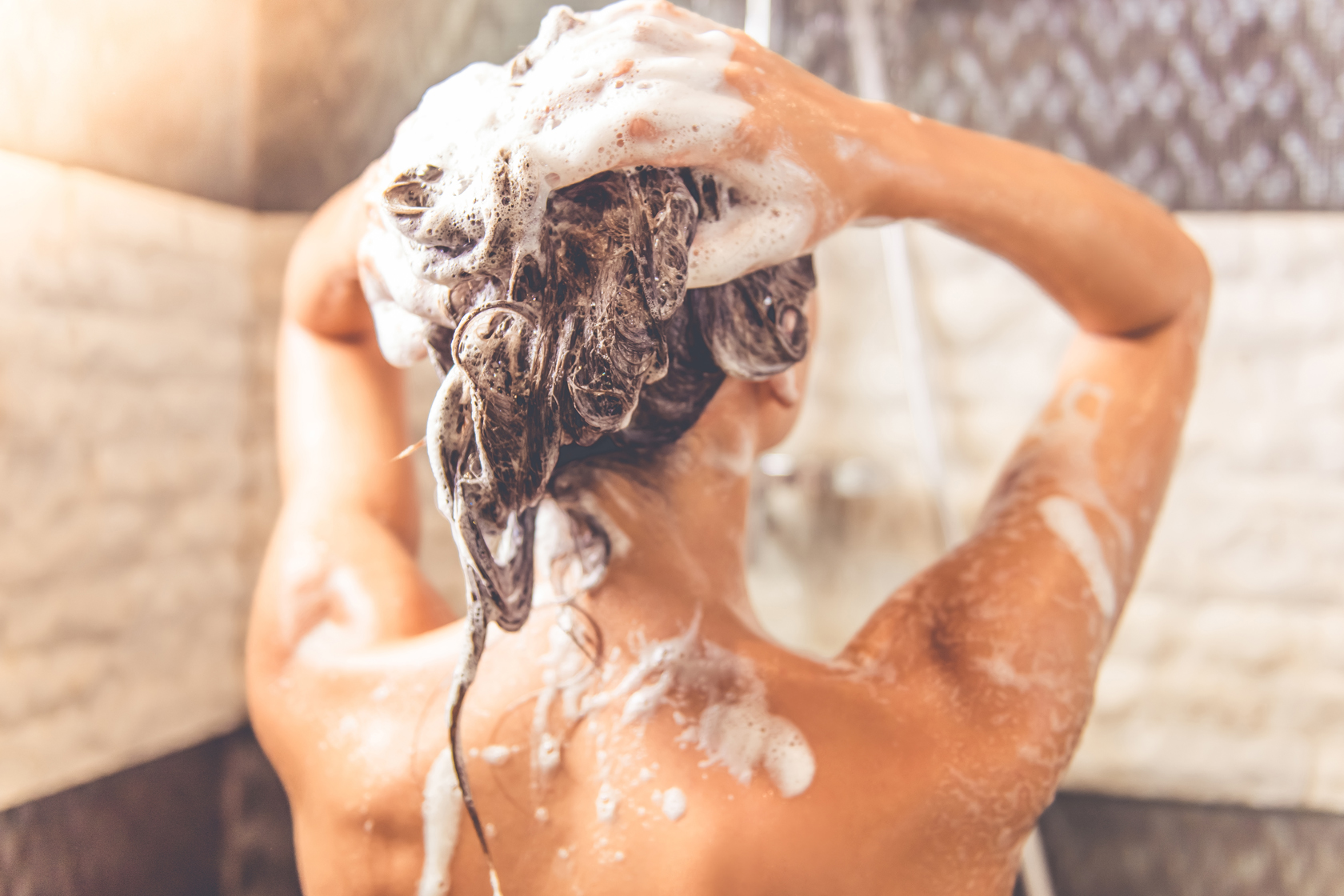
Does winter really make your hair fall out?
10/10/2019Seasonal hair shedding is affecting many of us – here’s why it’s happening and how to deal with it.
Research has shown that the changing seasons directly affect the amount of hair we shed, and many of us are currently at the height of our hair-loss cycle.
But before you start to panic, there’s probably nothing to worry about. “There are three stages of the hair growth cycle: anagen (the growth phase), catagen (an intermediary phase), and telogen (the resting phase)” explains Anabel Kingsley, trichologist at Philip Kingsley. Simply speaking, the telogen phase signals the start of the shedding – hair is likely to fall out around 100 days after entering this phase.
Studies have found that we have a higher number of hairs when we enter the telogen phase in July, meaning we notice increased shedding come October and November time. There are many theories as to why this happens: one is that we hold on to more hairs in the summer to ensure protection from the sun, letting them fall in the winter when they’re less needed.
“It is ‘normal’ to lose up to 100 hairs per day, provided they are growing back” says Kingsley. This may sound a lot, but bear in mind the average head hosts 100,000 hairs.
However, if you’re noticing bald patches or discomfort, it may be time to see a doctor. Kingsley advises: “If you consistently notice you are losing more hair than usual, or that the nature of your hair shedding has changed, it is probable that there is an underlying cause that needs to be addressed. You should also seek help if hair comes out in patches or if hair loss is accompanied by a sore or inflamed scalp.
“You will usually know if you are shedding an abnormal amount of hair – you’ll notice more hairs coming out when you shampoo, brush and style, and perhaps on your floor, clothes and pillow. It is not unusual to lose as many as 300 hairs, that is three times the normal amount.”
So, while everyone’s experience with hair loss is different, if you’re simply noticing a little more fallout than usual right now, it’s probably natural. Although you can’t stop shedding in its tracks, there are things you can do to keep it to a minimum.
Read on for six smart moves to help your hair…
1.Treat your scalp
Healthy hair begins at the follicle, so it pays to take proper care of your scalp. Luckily, there’s a host of products out there bringing skincare technology to the hair arena. Inspired by Ayurvedic beauty practices, Aveda’s Invati Scalp Revitaliser, £49, contains turmeric and ginseng extracts to nourish and strengthen the follicles. At the more science-y end of the spectrum, Philip Kingsley’s Tricho 7 scalp treatment, £50, contains a mixture of zinc sulphate, vitamin B6 and azelaic acid to help create the optimal environment for healthy hair growth.
2. Address your diet
Hair loss can be encouraged by nutrient deficiencies, so if you’re experiencing heavy shedding it may be time to assess your diet. Avoid any restrictive eating habits or ‘quick-fix’ plans, as they often involve excluding certain food groups that healthy hair growth depends upon. Be sure to stock up on leafy greens (think spinach and broccoli) to amp up your iron intake, and look to salmon and nuts for essential fatty acids.
3. Try supplements
While supplements may not actually stop your hair from shedding, they can strengthen and thicken the hair strands that you already have, helping to disguise any thinning. Look for supplements containing high levels of silica, a trace mineral used to stimulate circulation to the scalp, thus encouraging healthy hair growth – we love Holland & Barrett High-Strength Silica Complex Caplets, £24.99. For those in need of a protein boost, try Philip Kingsley’s PK4 Dietary Supplements, £30, which contain a soya-based protein rich in hair-strengthening amino acids.
4. Keep it cool
Excessive heat styling not only dries out the hair fibre, it can burn your scalp too. We’re not suggesting you stick to air-drying in these frosty climes, but opt for a hairdryer with variable heat settings to minimise the damage, being sure to keep the nozzle moving constantly so not to overheat sections of the scalp. T3’s Featherweight 2 dryer, £155, boasts three heat settings and is crafted with tourmaline to speed up the drying process while reducing hair damage.
5. Refresh your fibres
It’s not just heat that can speed up shedding – friction can contribute too. Try switching out your usual towel in favour of a bamboo alternative – we love Hydrea’s Bamboo Hair Drying Towel Wrap, £11.50 – as the natural fibres will absorb moisture quicker than cotton and reduce abrasion from harsh towel-drying. Come night-time, slip on Silke’s Hair Wrap, £50, to reduce abrasion against your pillow – it’ll keep your blow-dry intact until morning, too.
6. Upgrade your brushes
The wrong brush can really wreak havoc on your hair, often pulling out strands in clumps. Heavy-handed brushing can erode the cuticle of the hair fibre, eventually leading to breakage. To keep damage to a minimum, use a brush with thick, plastic bristles, as they’re kinder to the hair than spiky natural ones.
What’s more, never use a regular brush on wet hair – wet, swollen hair fibres stretch easily, leaving them prone to overstretching and snapping. The WetBrush Shower Flex, £9.99, is ideal for speedy detangling in the shower (use while your conditioner sets to work). For brushing after bathing, the Original WetBrush, £11.99, is a tried-and-tested favourite.
Main images: Davide Ragusa / iStock
Source: Read Full Article



